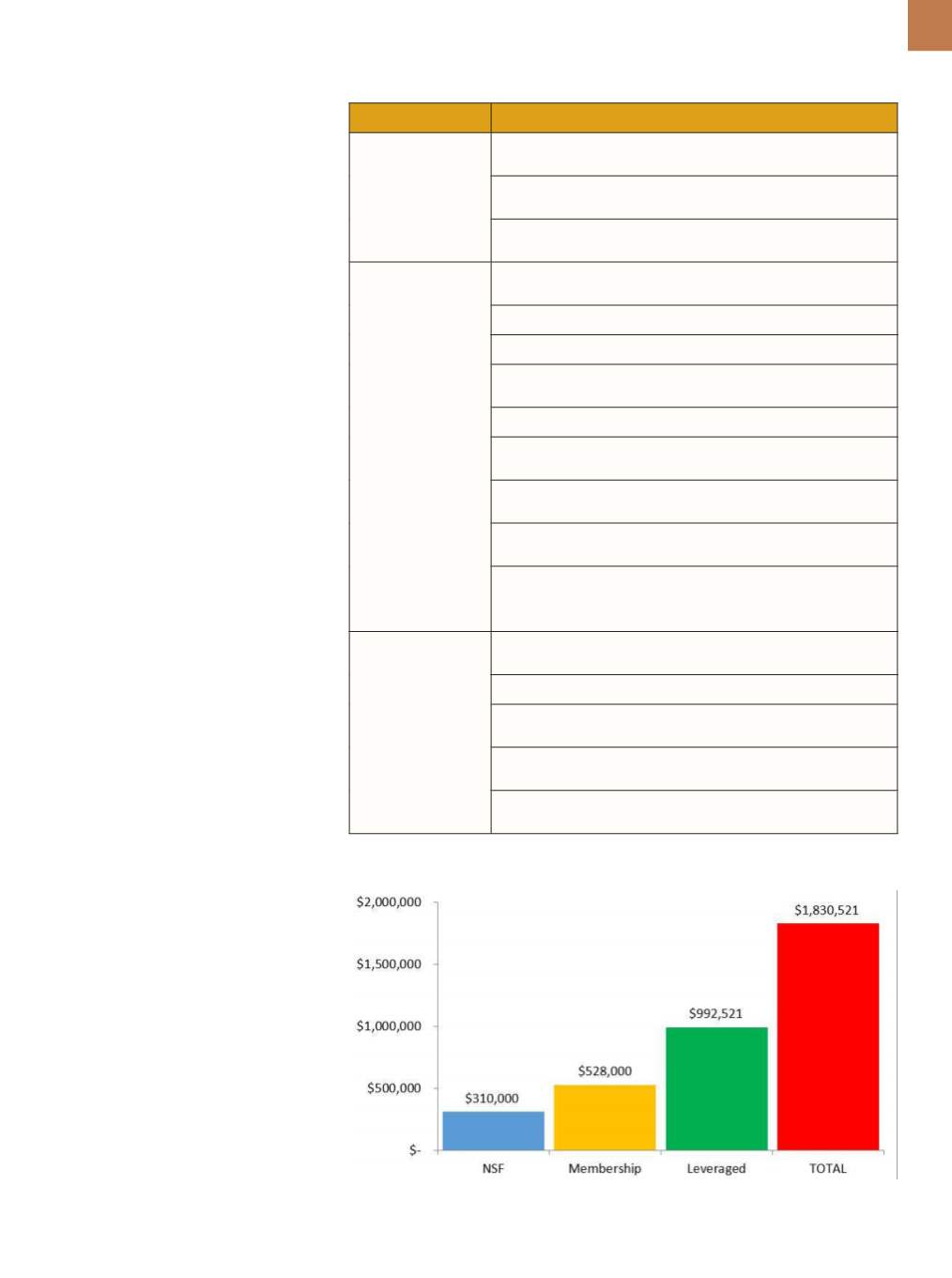

A D V A N C E D
M A T E R I A L S
&
P R O C E S S E S |
O C T O B E R
2 0 1 6
3 1
CANFSA STRUCTURE
CANFSA is led by director Michael
Kaufman, a professor at CSM, and two
site directors, Peter Collins and Amy
Clarke, associate professors at ISU and
CSM, respectively. The directors and
center are supported by the NSF-ap-
pointed center evaluator, David Meyer.
CANFSA’s target members include
organizations that research, produce,
process, or use non-ferrous structural
alloys. It is a member-driven organi-
zation, with participants consisting of
large corporations, small businesses,
government laboratories, and one
trade association. At present, CANFSA
has the following 14 members: Air Force
Research Laboratory, Army Research
Laboratory, Allegheny Technologies
Inc. (ATI), Boeing, Embraer SA, GE Avi-
ation, Honeywell International Inc., Los
Alamos National Laboratory, National
Aeronautics and Space Administration
(NASA), North American Die Casting
Association, Queen City Forging Co.,
Thermo-Calc Software Inc., Triumph
Group Inc., and Weber Metals Inc. Each
member has a seat on the industrial
advisory board (IAB), which provides
guidance to student projects and over-
sight of the overall research agenda.
Two levels of membership are available
within CANFSA—full or associate—with
the latter available to organizations
with less than 500 employees.
The managing director, Steve Mid-
son (research professor, CSM), focuses
on event planning, communications,
procurement of external research
grants, marketing, recruitment of new
members, and reporting and other
administrative functions.
CURRENT PROJECTS
As shown in Fig. 1, current annual
funding for CANFSA is more than
$1.8 million, which originates from
three sources including membership
dues, National Science Foundation
funds, and external, leveraged projects
funded outside of CANFSA.
There are 17 ongoing research
projects within CANFSA, which are
divided into three thrust areas—light-
TABLE 1
—
ONGOING CANFSA PROJECTS
Focus area
Project title
Lightweight non-
ferrous alloys
Effects of Strain Variations on Aging Response & Corrosion
Properties of 3rd Generation Al-Li Alloys
High Temperature Stability and Mechanical Properties of
Micro-eutectics in Bulk Solidified Al-Fe-Si-V and Related Alloys
Damage Tolerance/Accumulation in Ultra Fine Grained
Magnesium Alloys
High performance
non-ferrous alloys
Engineering Fine Scale
α
-Precipitation for
High Strength
β
-Ti Alloys
Low-Level Hydrogen Effects on Toughness in Titanium Alloys
Measurement and Modeling of Anisotropy in Ti-6Al-4V Forgings
Mechanism of Dwell Fatigue Crack Initiation in Ti-7Al Under
Biaxial Tension-Tension Loads
High Temperature Titanium Alloys
Effect of Grain Size and Precipitate Volume Fraction
on Creep and Fatigue in Nickel Alloys
Characterization of Microstructure Evolution in Nickel-
Titanium-Hafnium Intermetallics for Bearing Applications
Understanding Strengthening of an Aerospace
Niobium-Hafnium-Titanium Alloy
Atomic Ordering in Alloy 690 and its Effect
on Long-Term Structural Stability and Stress
Corrosion Cracking Susceptibility
Advanced alloys
and processes
Collaboration to Accelerate the Discovery of
New Alloys for Additive Manufacturing
PVD Coatings Applied to Die Steel for Lube-Free Die Casting
Multilayer PVD Coatings for Service Life Extension of
Components Used in Aerospace and Manufacturing
Effects of Thermal Processing Variations on Microstructure
and High Cycle Fatigue of Beta-STOA Ti-6Al-4V
Understanding the Physical Metallurgy of a New Nickel-Based
Alloy with a Low Coefficient of Thermal Expansion
Fig. 1 —
CANFSA annual funding effective April 1, 2016.
















